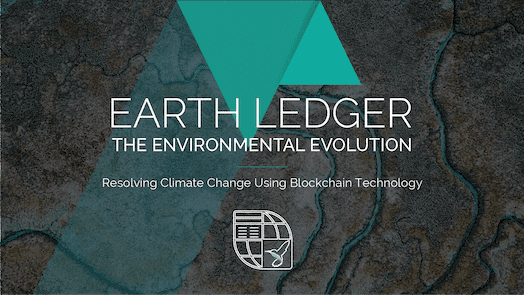Imagine you’re in a tech store, shopping for a new laptop. Value for money is on your wish-list, but so is low environmental impact.
Luckily, there is an app for that! A quick scan of a QR code with your phone reveals the amount of CO2 emissions, water and any rare materials that went into making each device. And even where you can dispose of it.
Such is the ambition of an experimental new pilot platform, the Citizen Portal: a partnership between software company SAP, sustainable tech solutions firm Everledger, a major manufacturing company and the World Economic Forum.

It’s designed to help companies make products more sustainable and sources more ethical. But it also aims to respond to the increasing consumer demand for transparency and to promote a circular economy, with greater recycling and use of remanufactured goods.
“Sustainability is a shared responsibility across the value chain, and all actors in the ecosystem need to be connected.”
—Priyanka Khaitan, Head of Innovation, SAP
Material world
From pollution and solid waste to water scarcity, desertification and deforestation, the need to address the underlying drivers of environmental degradation is increasingly recognized by stakeholders in government, civil society and business.
On the supply side, stakeholders are facing disruptions driven by an increasing number of adverse climate events or the depletion of resources. The extraction of resources has more than tripled since 1970, according to the United Nations, and natural resource use is expected to grow by 110% by 2060.
At the same time, the supply side is not only affected but also a key contributor to climate change. As the Ellen MacArthur Foundation notes, the switch to renewables and greater energy efficiency will only address 55% of carbon dioxide emissions.
“The remaining 45% comes from producing the cars, clothes, food, and other products we use every day.”
On the demand side, consumer attitudes are becoming more important as the next generation of environmentally-conscious shoppers will represent the majority of consumers by 2030.
A 2018 Nielsen survey found almost three-quarters of consumers would “definitely or probably” change their consumption habits to reduce their impact on the environment.
The demand for increased transparency to allow for conscious consumer decisions is clearly there – and increasingly so is the willingness of manufacturers to test new business models with a positive environmental and social impact. This is where initiatives like the Citizen Portal pilot come in.
The World Economic Forum’s expert Maria Basso, who worked on the project, explains how it could be a game-changer for manufacturing and consumption:
How did the Citizen Portal idea come about?
The idea was born in 2018, at the Annual Meeting of the Global Future Councils in Dubai, while reflecting on the younger generation’s need for sustainability. My team partnered with the United Nations Development Programme and A.T. Kearney to analyze the current disruption of global value chains, and two key insights reinforced the idea of the Citizen Portal.
Firstly, it’s becoming ever-more important for manufacturers to be close to customers in order to derive economic value, for example by accessing demand data. The Citizen Portal can enable this by providing information such as data about when a product was purchased and disposed of. Secondly, the portal can address customers’ increasing transparency requirements by providing insights across the value chain that allow conscious decisions to be made.
The coolest thing about this pilot project is we’ve done the research and we know it can work, so we’re now focusing on the “how” rather than on the “what if?”.
How does the Citizen Portal work?
The pilot has been developed with two use cases in mind to get the conversation started. One is around consumer awareness, and helping people compare products to make decisions based on sustainability. If you’re buying a new laptop, for example, you scan its QR code and visit an online platform that shows the CO2 emissions, rare materials and water consumption involved in its creation.
The second use case concerns end of life. Manufacturing companies are really struggling to take products back and to understand how to remanufacture and close the loop. When you scan the QR code, the Citizen Portal displays end-of-life information that tells you where and when you can dispose of a particular product. So it brings customers into the loop.
The harmonized simplicity of blockchain serves as a data reference check against a record. Its workflow and signatures are vital for the value chain to bring transparency and support the case for sustainable production
—Leanne Kemp, Founder and CEO, Everledger
What is the opportunity for business?
Sustainable products could initially cost more to manufacturers, but nearly 4 out of 10 customers would be willing to pay more for them. In addition, new business models could be created to recover value from waste. In this scenario, governments play a pivotal role, by creating the right policies and environment to incentivize manufacturers to increase the production of remanufactured products.
What roles did the project’s partners play?
The three partners are part of the Global Future Councils – a network for promoting innovative ways to shape a sustainable and inclusive future. At the councils’ Annual Meeting in Dubai last year, they looked at the future of manufacturing and production and decided a pilot was needed to show this is feasible. SAP is leveraging its technology assets. Our manufacturing partner, which sells B2B equipment, already had all of the data about the product. And Everledger, the transparency technology company, is providing increasing levels of evidence on asset information like origin, characteristics and ownership, and making sure it holds true in the supply chain.

Could this be a game-changer for the manufacturing industry?
It would be a strong incentive to producers to change their business models because finally consumers can make sustainable choices based on data. Those manufacturers who use an economic incentive for customers to bring back products would be at the forefront and others would need to follow to continue being competitive. Currently, we are remanufacturing just 2% of all the products that we have. So we are losing a massive amount of value economically.
At the end of a product’s life, would all parts be recyclable?
It depends on the product. But if they were, the app would show people where to recycle it, which wouldn’t have to be with the manufacturer itself. New services could start with recycling companies, which would take the products and send them to the manufacturers. So it opens new opportunities for businesses.
What more needs to happen?
The European Parliament has declared a global “climate and environmental emergency”, and scientists have warned that the world may have already crossed a series of climate tipping points, resulting in “a state of planetary emergency”.
We need more action. Companies must come up with innovative business models that can prove sustainability. Advanced technology like blockchain and intelligent labelling, which enable the convergence between digital and physical worlds, is ready. Now we need more manufacturers willing to scale this pilot. It’s feasible, so let’s come together as an industry and make it happen.
Source: World Economic Forum | Agenda | Emerging Technologies









